The arc welder revolutionized welding. It placed welding in the realm of the average person who did not have much money or training. Today, however, it is often seen as an antiquated method, only good for welding rusty old farm implements. With proper technique and equipment, an arc welder is still a viable tool today.
I recently came across a single person cross-cut saw in rather good shape, except for a broken tooth right in the middle. Most people would say it is impossible to weld something so thin with an arc welder, that you "need" a TIG welder for such a job. Well, the TIG welder is out of gas, and this presents an opportunity to try something different.
The offending tooth
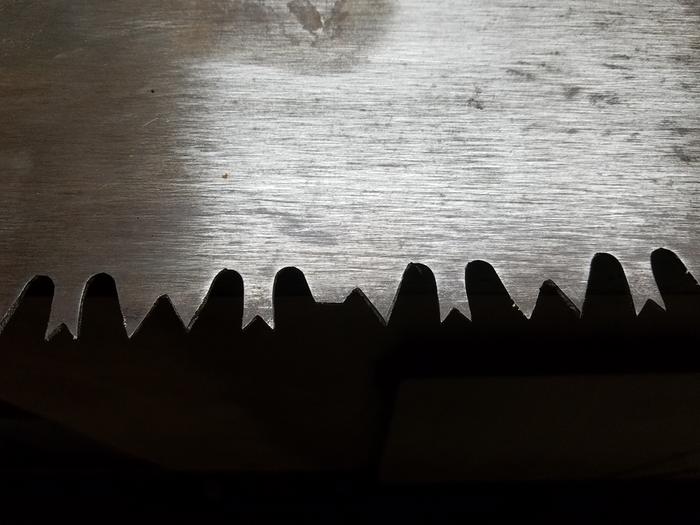
This tooth on the far back edge isn't doing any work back there.
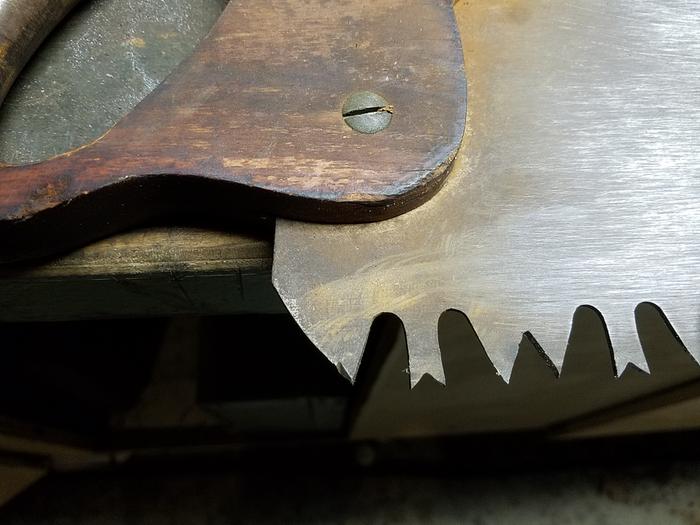
I've never sawed a saw before.
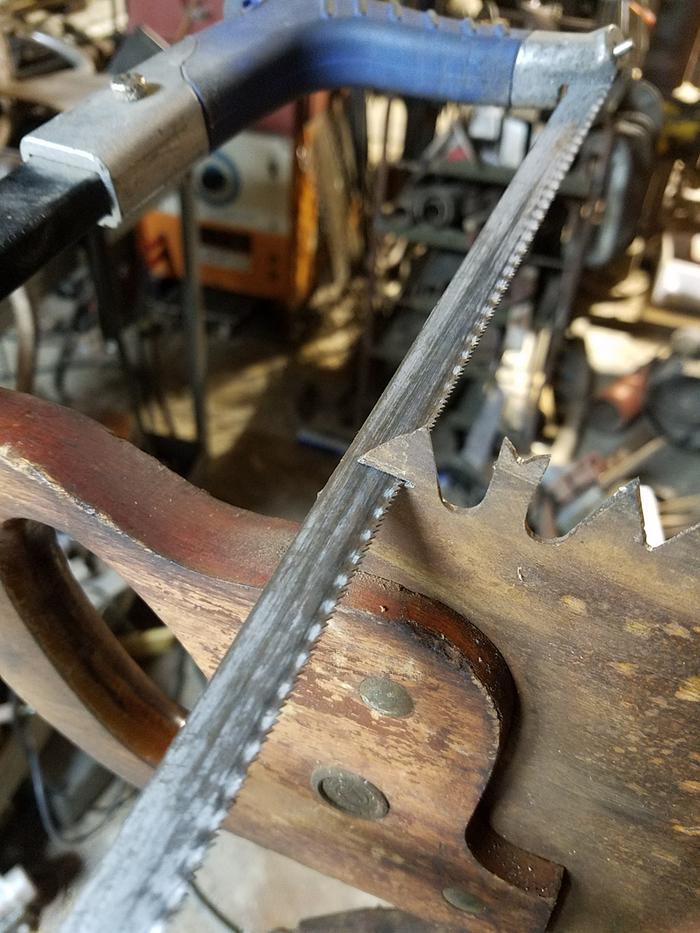
The secret is copper. Copper has a high melting point and absorbs heat much faster than steel. It provides a base for the molten steel to pool on while it solidifies. The rod used is a 1/16" 7014. The welder is set to 45 amps on DC reverse polarity for shallow penetration.
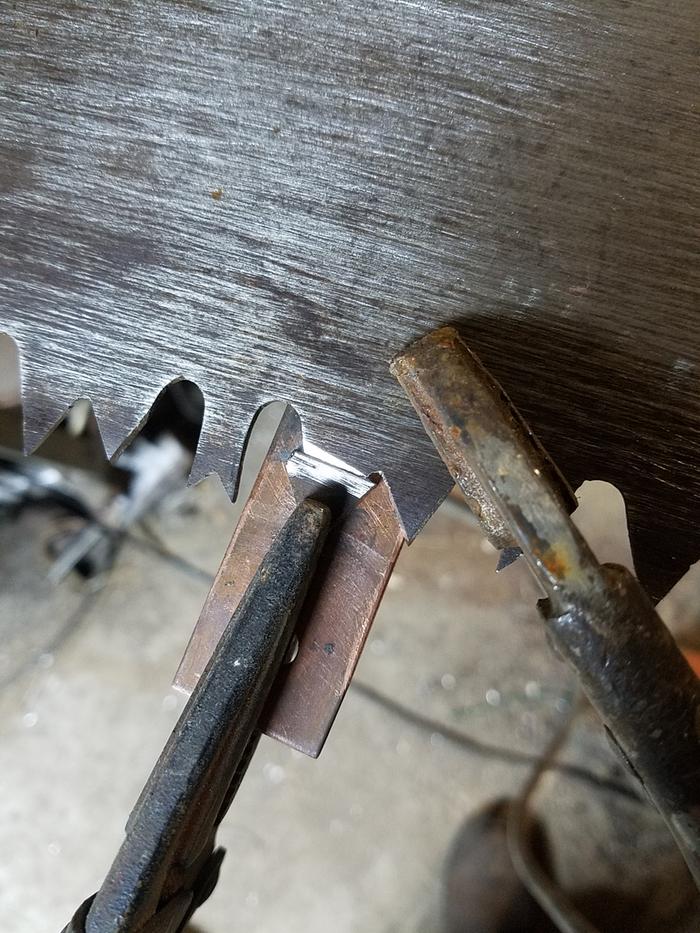
The first side welded and partially ground down so the copper strip will lay flush against it for welding the other side.
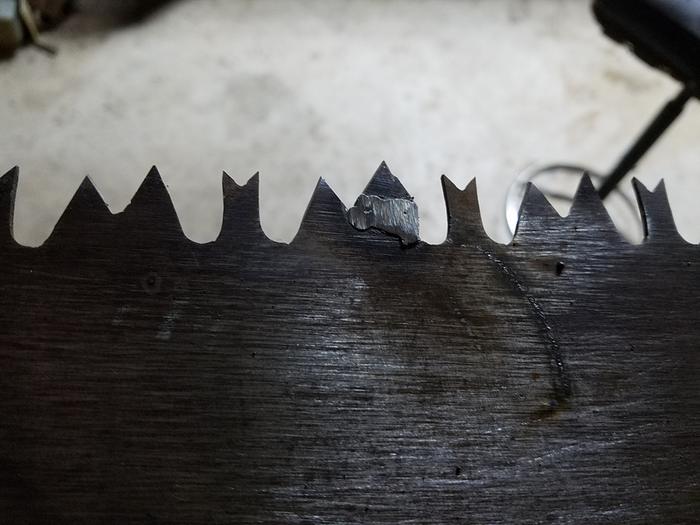
The other side.
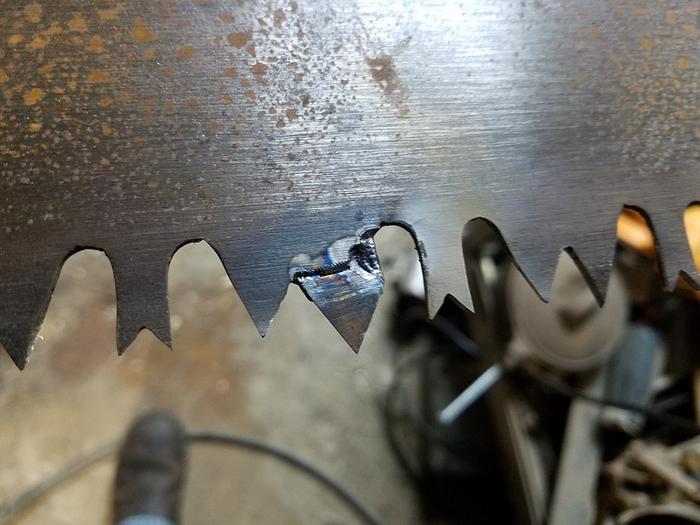
First pass. Remember cleanliness is next to godliness, especially in extreme situations like this. Be sure to clean the weld well between passes. Make sure the weld penetrates the joint fully. The second pass can be bolder than the first due to the extra mass added on the first pass.
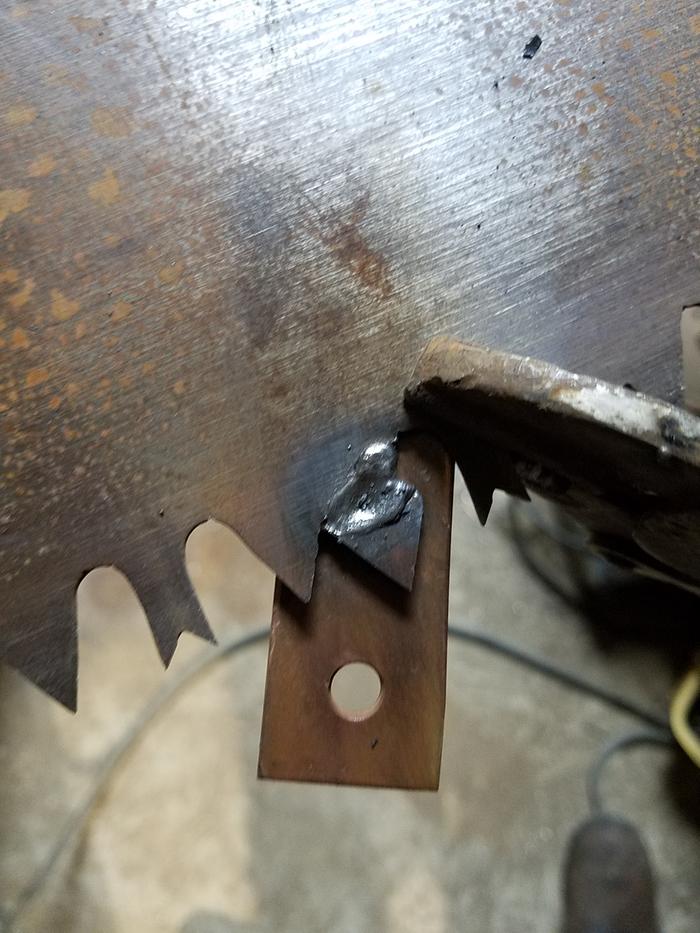
Second pass.
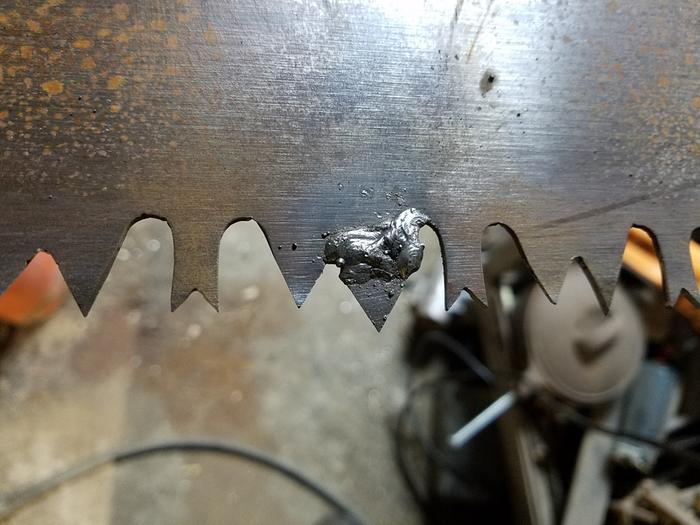
Ground flush with angle grinder and partially ground to profile.
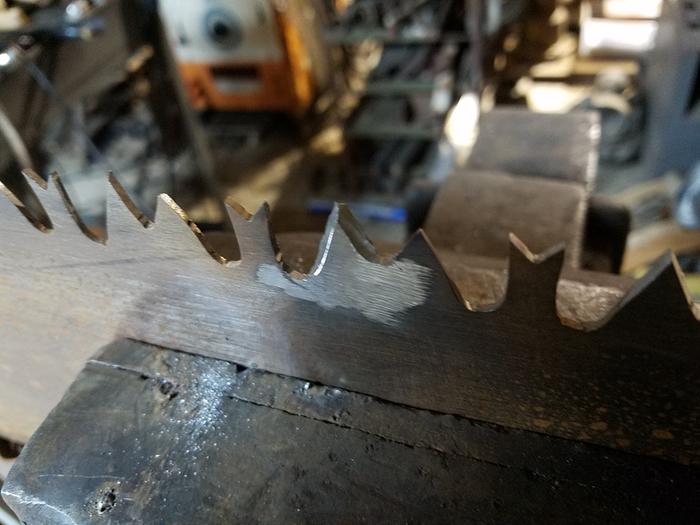
Fully profiled, set, sharpened, and done.

This is by no means a beginner project, but this proves it is perfectly practical. The weld is small enough and the copper conductive enough that it did not heat much of the area around the weld. Even the temper of the adjoining tooth was not ruined. I believe the alloy of the tooth is tough enough to function as-is. It is definitely a bit softer, but saw teeth are not particularly hard anyway. It may dull a little quicker than the rest, but at least it is there. If it proves too soft, I may try to harden it later.


